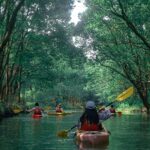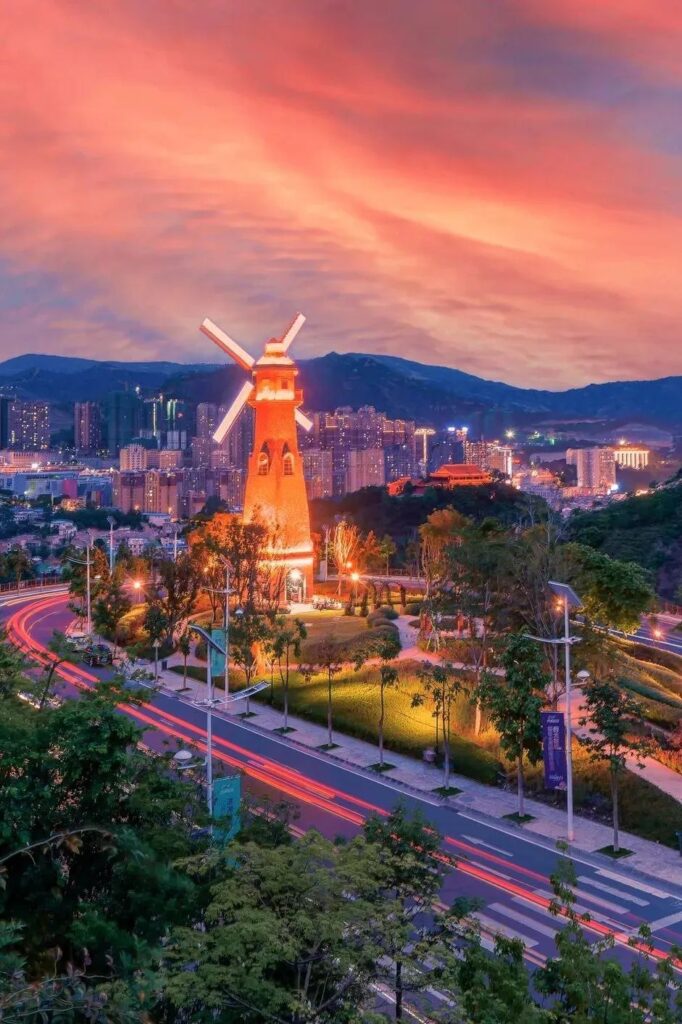
People’s Daily Overseas Edition published an article in the “Travel World” section in 2022, praising Panzhihua’s tourism and recommending it to the world.
Moreover, People’s Daily Online has mentioned Panzhihua and its delicious food more than once, praising the taste of Panzhihua as “too ba shi le” (meaning “too comfortable” in Sichuan dialect)!
The Fruit City with “Mild Winters and Cool Summers”
Panzhihua, located at the border of Yunnan and Sichuan provinces, is the “southern gateway” of Sichuan.
Many people know or have heard of Panzhihua, mostly because of its mines.
However, few people know that Panzhihua is also a small hidden gem city with “mild winters and cool summers,” where flowers bloom all year round, fruits are abundant, and it’s also known as the “Little Shangri-La” of southern Sichuan.
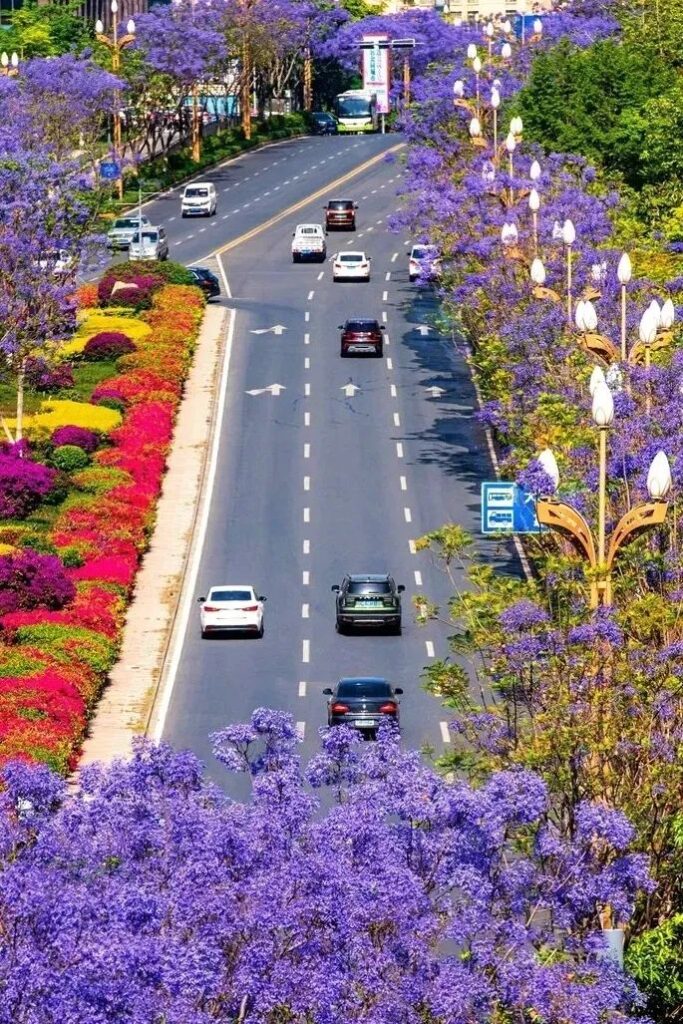
Panzhihua has a South Asian tropical dry-hot valley climate, with an average annual temperature of 20.7°C, making it a nationally renowned winterless region.
The abundant sunshine also makes Panzhihua the only subtropical fruit production base in Sichuan, with fresh fruits available all year round, easily achieving “fruit freedom.”
Unique “Shangri-La” Atmosphere
The unique geographical environment gives Panzhihua’s natural scenery an extra touch of “Shangri-La” atmosphere. The scenic spots in Panzhihua not only have stunning landscapes but also have beautiful names.
Malu Village: Sichuan’s Own Altay
Malu Village is a primitive ancient Yizu village with only around 1,000 inhabitants.

Located within the Ertan Scenic Area in Miyi County, Panzhihua, at an altitude of 2,700 meters, Malu Village has lush green grasslands, wildflowers all over the mountains, blue skies, white clouds, and galloping horses… It is a veritable “garden in the sky.”
Many Sichuan people consider this place their own Altay.
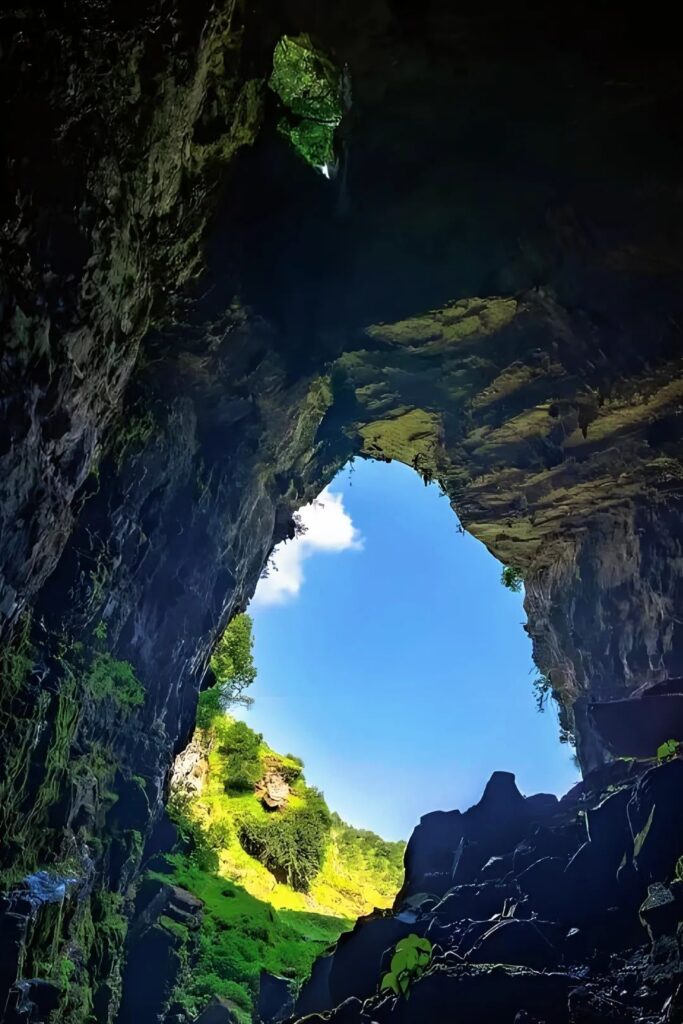
In addition to the alpine meadows, there are also ancient village ruins, Manwang Cave, Tianchi, Hongbi Beach, and other beautiful sights. Every year from July to October is the best season for camping in Malu Village. Besides admiring various beautiful sceneries, you can also watch the magnificent starry sky of the Milky Way.
Xinshan Terraces: A “Living Fossil” of Farming Culture
Also located in Miyi County is a beautiful village called Xinshan Village in Xinshan Lisu Ethnic Township, which is the only Lisu settlement in Miyi County.
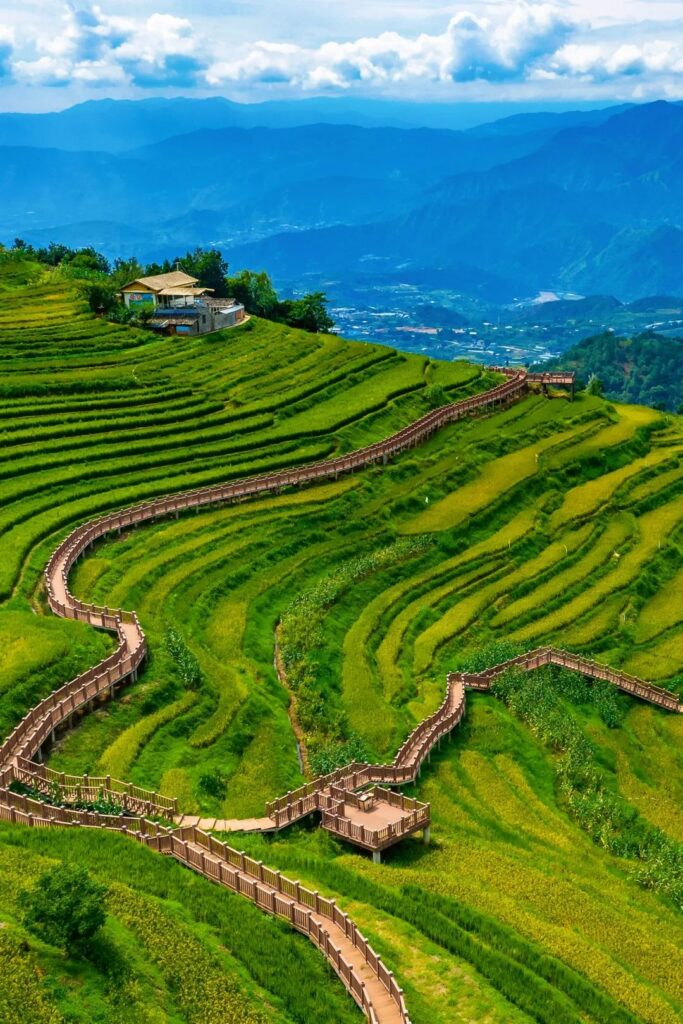
The Xinshan Terraces, distributed on the hillsides at an altitude of 1,000-3,000 meters, are known as a “living fossil” of farming culture and one of the most beautiful terraces in China.
Walking on the field paths of Xinshan Terraces, experiencing the rich cultural heritage and unique folk customs of the Lisu people, or sitting in a coffee shop by the fields, drinking coffee, enjoying the terraces, basking in the warm sun in winter, and enjoying the cool in summer, are all wonderful experiences.
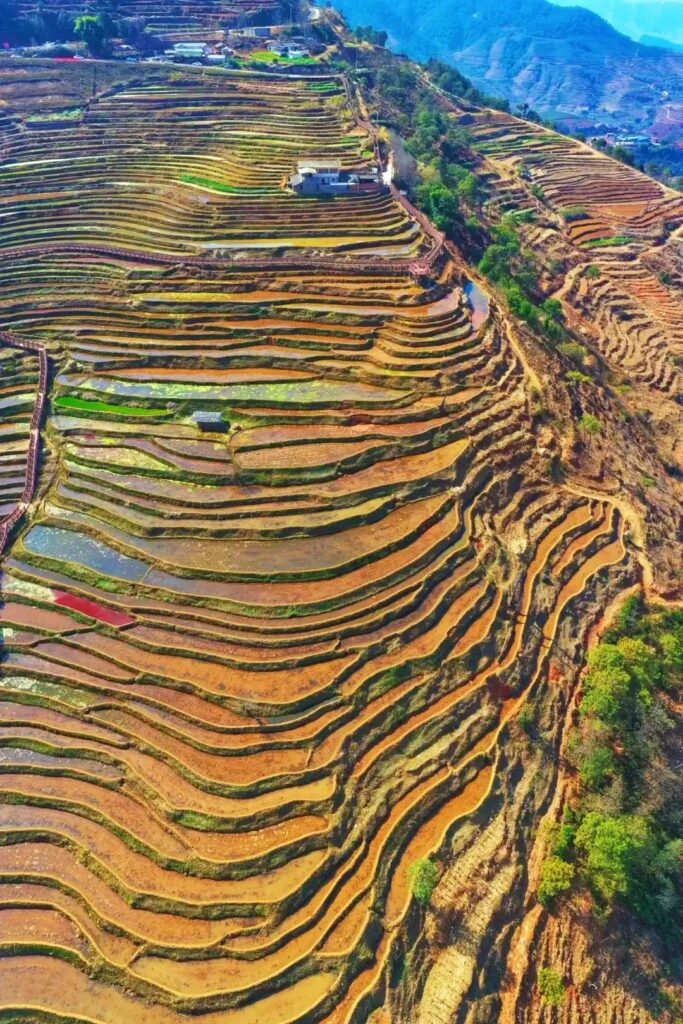
Xinshan Terraces have different landscapes in each season, so you can choose the season to visit according to your preferences.
In summer, the lush green rice fields and corn fields are layered and vibrant; in autumn, as far as the eye can see, there is a golden color mixed with the joy of harvest, beautiful as a painting; in winter, the terraces filled with water are like mirrors, reflecting a kaleidoscope of colors, dazzling and spectacular.

Gesala: The Shangri-La of Panzhihua
Gesala is a concentrated area of the Yi ethnic group, with a strong Yi ethnic flavor, known as “the place where immortals live.”
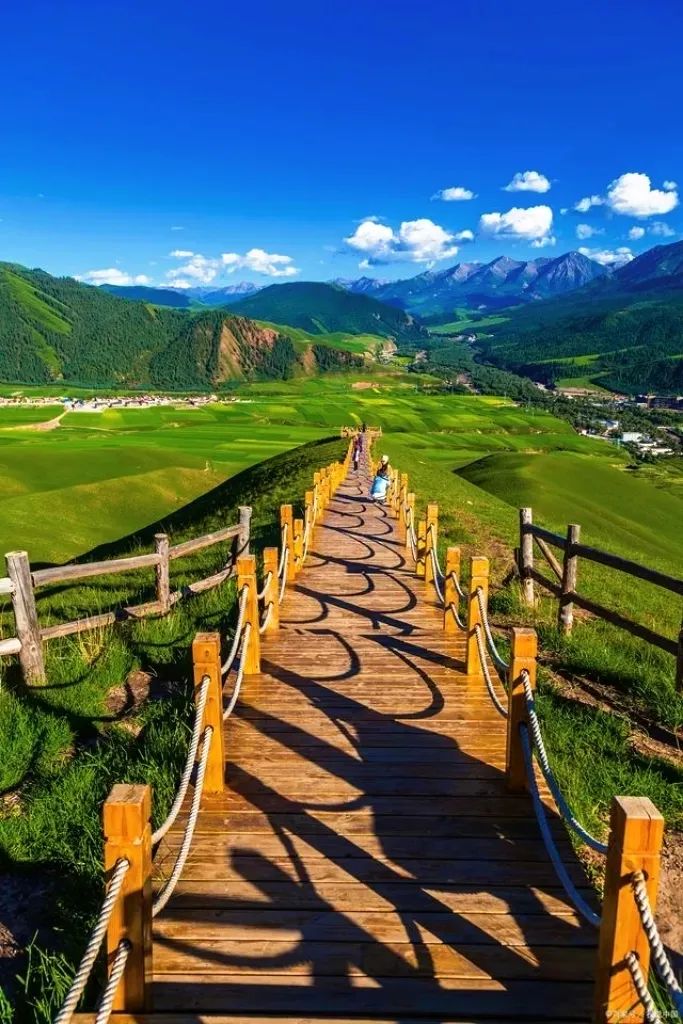
It brings together natural and cultural landscapes such as primitive forests, alpine meadows, sinkholes, and Yi ethnic customs, making it a “natural geological museum.”
A senior geologist once commented that the landforms of Gesala’s mountains and rivers are comparable to Huanglong and Jiuzhaigou.
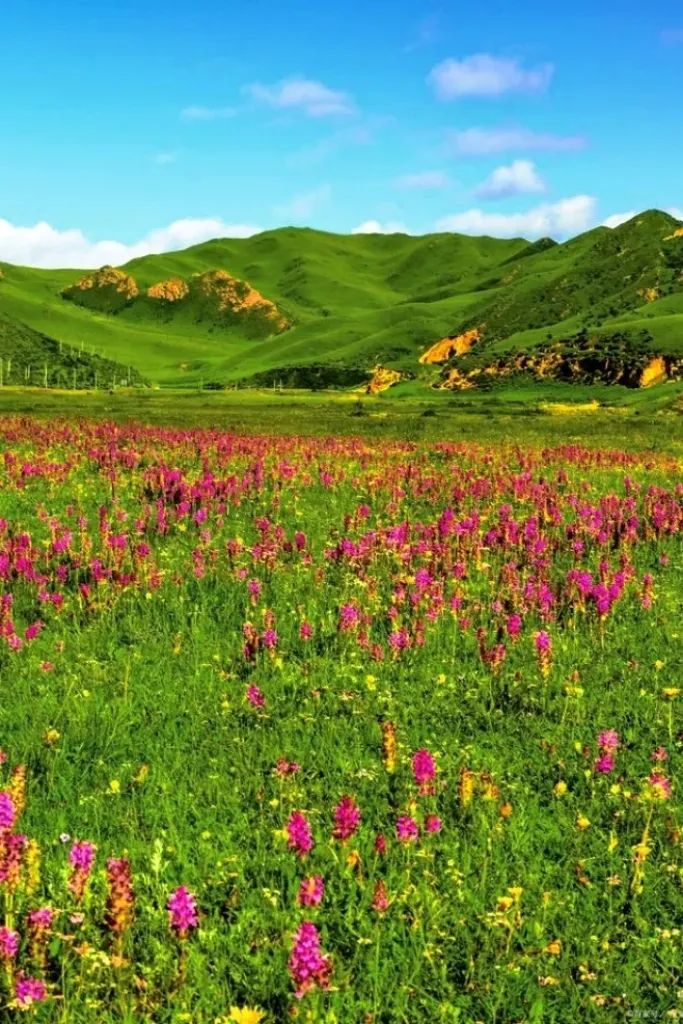
In summer, Gesala is filled with wildflowers. The summer here is extremely cool, with fresh air and high negative ion content, making it an ideal place for escaping the heat and lung cleansing.
Yishala: The Number One Yi Village in the World
Built during the Ming Dynasty’s Hongwu era, Yishala Village is the largest natural Yi village in China, known as “the number one Yi village in the world,” with a history of more than 600 years.

The wooden tile houses in Yishala Village are distributed on the hillside in an orderly manner, with crisscrossing alleys inside the village, as dense as a spider’s web. Walking through the high walls and deep alleys feels like walking in a maze of time and space.
The long-term interaction and integration between the Yi and Han ethnic groups have created a unique Lipo folk culture in Yishala, which inherits the ancient ethnic characteristics of the Yi people and incorporates elements of Han culture, making it distinctive.
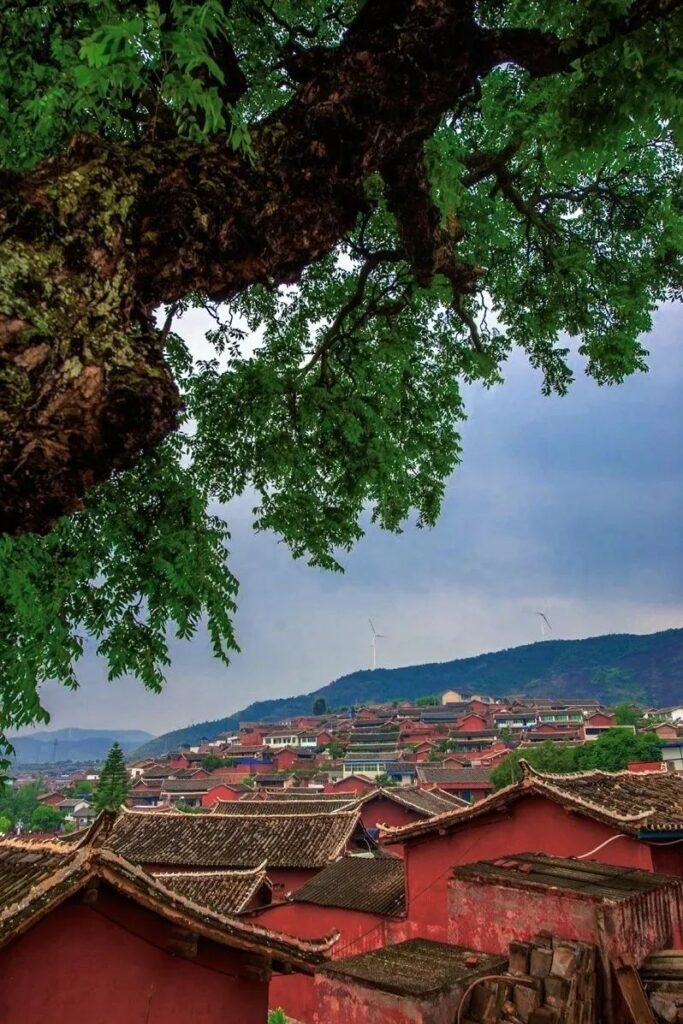
Zhuanxu Dragon Cave: The Number One Cave in Ancient Shu
Zhuanxu Dragon Cave is one of the few caves in China with water flowing inside, and the negative oxygen ion content in the cave ranks first in the country, making it the number one cave in Panxi and even in ancient Shu.

The dragon cave has three wonders: the colorful stalactites, stalagmites, and other dripstones; the two-palace landscape composed of the Dragon Palace and the Heavenly Palace; and the rare sight of waterfalls both inside and outside the cave.
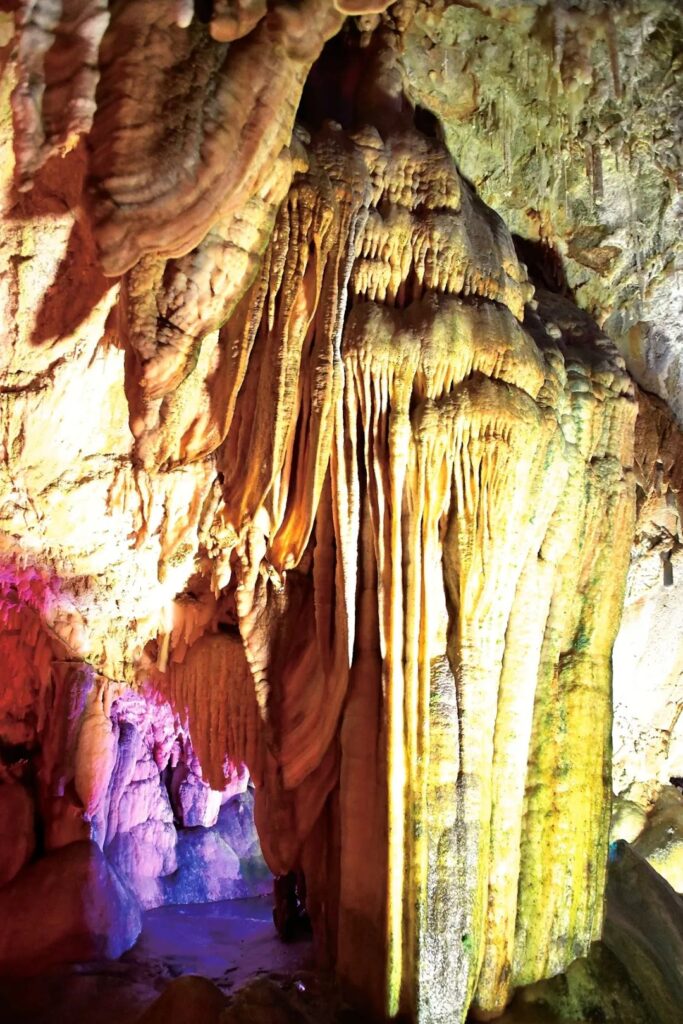
The Collision of Immigrant City Cuisine
Panzhihua is the largest immigrant city in western China, with 98% of the urban population coming from all over the country.
For thousands of years, the food cultures of various ethnic groups have collided and blended here, forming a unique food culture with Panzhihua characteristics.
When it comes to Panzhihua’s delicacies, a plate of authentic “Yanbian Cuisine” and a pot of delicious Miyi Copper Hotpot are must-haves on the list.
Yanbian Lamb Rice Noodles
The soul of Sichuan cuisine, combined with the integration of multiple ethnic groups, has created the “Yanbian Cuisine” that is spicy, fragrant, and has its own system.
“Yanbian Cuisine” has been passed down from generation to generation and is well-known far and wide.
Yanbian lamb rice noodles, a breakfast full of the flavor of life, are the favorite of Panzhihua people.

The milky white and chewy rice noodles, topped with fresh soup and large pieces of lamb, sprinkled with green Sichuan pepper and mint, and then drizzled with a spoonful of chili oil, create an extraordinary taste experience that is unforgettable for a lifetime.
Miyi Copper Hotpot
Miyi Copper Hotpot is a hotpot where all the ingredients are layered into the pot according to the different levels of heat required for cooking, and then the stir-fried and prepared chicken, duck, cured pig’s trotters, meatballs, etc. are stacked layer by layer, and finally, a thick soup is added to simmer.
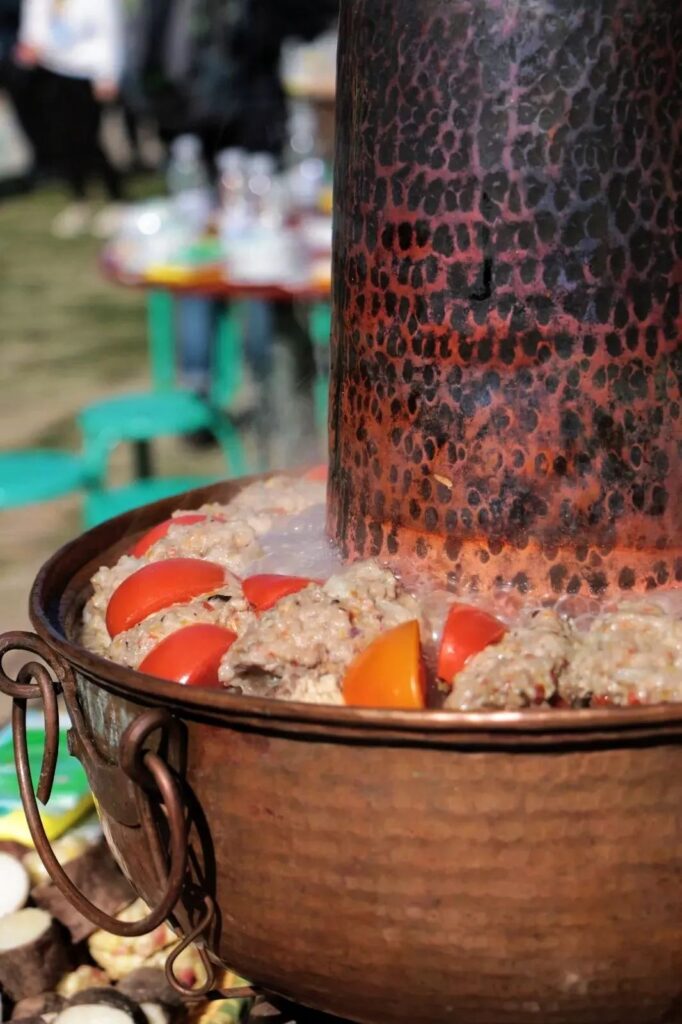
After the hotpot has been simmered for half an hour, the moment the lid is lifted, the flavors of various ingredients are mixed together, with a tantalizing aroma. Paired with a spicy and delicious dipping sauce, there are only two words to describe it: Ba Shi!
Panzhihua is far more than just mines.
It also hides stunningly beautiful scenery and folk culture, as well as the endless love for life of the people of Panzhihua.

